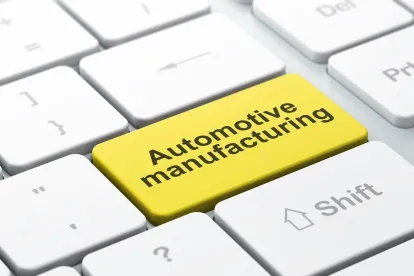Automotive companies faced unprecedented challenges in 2020. In the coming year, these challenges will continue as companies navigate the continuing COVID-19 pandemic, related leave/quarantine issues and new challenges brought on by vaccines. In addition, 2021 brings a new presidential administration, which will implement policies and priorities in direct contrast to the prior administration, including anticipated changes to the federal minimum wage, independent contractor analysis and NLRB focus and priorities. A theme of the year will be change and flexibility, as the pandemic will no doubt transform with the increased availability to vaccinations, and the Biden administration implements new regulations and laws.
1. Leave Issues
As the COVID-19 pandemic continues, automotive employers will continue to face challenges related to employee leave issues. In 2020, a myriad of federal, state and local laws were enacted that required leave in certain COVID-19-related scenarios, including a positive test result, exposure to an infected person, care for a family member, and school closures, among others. Key in the analysis of what leave may be required was the Families First Coronavirus Response Act (FFCRA), first enacted in the spring of 2020 and expired on December 31, 2020. The FFCRA was not renewed by Congress prior to its expiration. It should be noted that while employers are no longer required to provide leave under the FFCRA after December 31, 2020, if they chose to provide it, the Consolidated Appropriations Act, 2021, extended employer tax credits for FFCRA leave voluntarily to employees until March 31, 2021.
While President Biden has expressed support for its renewal, the FFCRA’s leave requirements are no longer in effect. Despite the fact that federal leave requirements under the FFCRA have ended, employers still face a patchwork of state and local COVID-19-related regulations (some of which reference other standards like CDC guidance), sick leave laws and, of course, the usual FMLA and ADA leave issues. Looking forward, employers must continue to be vigilant in their knowledge of which leave requirements apply to their locations, as well as keeping up to date on any changes to those requirements. While vaccines are now beginning to be distributed, experts expect that it will be many months before employers likely see an easing of the COVID-19 pandemic. Until then, COVID-19 leave-related issues will continue, as will changes in state and local regulation of COVID-19-related restrictions.
2. Vaccine-Related Policies
As COVID-19 vaccines are increasingly available, automotive employers, like other employers, will soon face the question of what, if any, position to take with respect to vaccinations. Education will likely be a key component of any potential vaccine-related policy. In today’s world, employees get their news from a variety of sources, including social media. As a result, misinformation regarding COVID-19 vaccines is an issue that employers will face if planning to implement a vaccine policy that either requires or encourages vaccines. An educational component will be key to the successful rollout of a vaccine-related policy.
Employers generally face the question of whether to mandate vaccines, encourage employees to get vaccinated or take no position. Each approach has challenges. A vaccine mandate may face strong opposition from employees. Even setting aside the question of employee opposition to vaccination for nonmedical reasons, employers who choose to mandate vaccines will face issues related to ADA requests for accommodations for employees who are not able to be vaccinated due to a disability or medical condition. In addition, with availability of the vaccine in question in many geographic areas, a mandate may not be practical due to vaccine scarcity. Offering incentives for vaccination, along with educational programming, may be an alternative that does not face as much opposition while still having a positive effect on the percentage of vaccinated employees.
Any vaccine-related policy will also need to provide for continued health- and safety-related protocols. Some employees, especially those in a production environment, have been performing their work in person for months. However, others have remained working at home either on a full-time or part-time basis since the start of the pandemic. As employees who have been working remotely begin to return to the workplace, COVID-19-related safety protocols may need to be implemented for departments or teams that have not yet implemented such restrictions. A continued focus on safety will be paramount as the vaccine rollout continues.
3. Changes Related to the New Biden Administration
The new Biden administration is sure to set a new tone when it comes to employment-related issues. The pace of change will vary depending on the methods needed for implementation. On the horizon are likely changes to the federal minimum wage, change of control and priorities at the NLRB, and increased enforcement at OSHA, as well as changes to the newly finalized regulations regarding independent contractor classifications.
President Biden has expressed a desire to implement a $15 minimum wage, which would more than double the current federal minimum wage of $7.25. On January 22, 2021, he signed an executive order increasing the minimum wage for federal workers to $15 per hour. The President has also proposed a $15 minimum wage as part of his larger stimulus package. Even where employers pay more than the required minimum wage, a change may have a cascading impact. An increase in the minimum wage may mean that employees who currently make close to that amount in a physically demanding job will have options to make the same amount for less work. As a result, in a competitive labor market, the increase in the minimum wage may have an impact beyond those currently making less than $15 per hour.
Similarly, the Biden administration has signaled that it intends to implement a change to the rules regarding classification of independent contractors. It is widely expected that the Biden administration will stop a recently finalized rule regarding independent contractor classification from taking effect in March 2021. In its place, the Biden Plan for Strengthening Worker Organizing, Collective Bargaining and Unions specifically endorses California’s “ABC” test. The California Labor and Workforce Development Agency describes the ABC test as follows:
Under the ABC test, a worker is considered an employee and not an independent contractor unless the hiring entity satisfies all three of the following conditions:
The worker is free from the control and direction of the hiring entity in connection with the performance of the work, both under the contract for the performance of the work and in fact;
The worker performs work that is outside the usual course of the hiring entity’s business; and
The worker is customarily engaged in an independently established trade, occupation, or business of the same nature as that involved in the work performed.
President Biden’s plan states that the President will “work with Congress to establish a federal standard modeled on the ABC test for all labor, employment, and tax laws,” eliminating the current - often confusing - structure in which various agencies use differing tests to determine whether a worker should be properly classified as an employee or an independent contractor.
The NLRB will also see changes with the change in control from a Republican to a Democratic administration. The five-member NLRB has three members from the President’s party and two members from the opposing party. With President Biden’s administration, the composition will change from three Republican board members to three Democratic board members. However, the replacement of the Republican members will not be immediate. The first of three Republican members’ terms does not expire until August 2021. It is anticipated that the President will appoint a replacement quickly. Once control of the NLRB is more heavily slanted toward Democrats, employers can expect an NLRB that more closely resembles the board under the Obama administration. Board priorities will likely include reinstitution of “quickie” elections and broad “joint employer” and independent contractor rules, as well as a more aggressive view of employee handbooks and policies, among other changes.
Similar to the NLRB’s soon-to-be aggressive stance, OSHA has also taken a more aggressive approach to COVID-19-related issues. This increase in enforcement has already started and is likely to continue under the Biden administration. OSHA has adopted an emergency temporary standard on workplace safety during the pandemic. It has implemented more aggressive investigations and penalties for employers who do not follow COVID-19-related protocols. In the longer term, under a Biden administration, employers can expect an increase in the number of OSHA investigations, which have been on the decline in recent years. Employers in the automotive industry should continue to closely adhere to COVID-19 workplace safety requirements and be mindful that the agency will likely increase the frequency and intensity of its investigations and enforcement in the coming year.
Summary
Automotive employers will continue to face challenges and uncertainty in 2021 brought on by the continuing COVID-19 pandemic, as well as changes to the legal landscape from a new presidential administration. One enduring factor will be frequent change in legal requirements on the federal, state and local level. The key to a successful 2021 will be vigilant analysis of the changes to come and an ability to be flexible in a changing environment.





 />i
/>i
